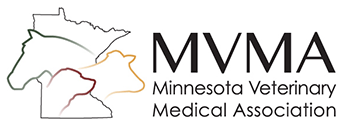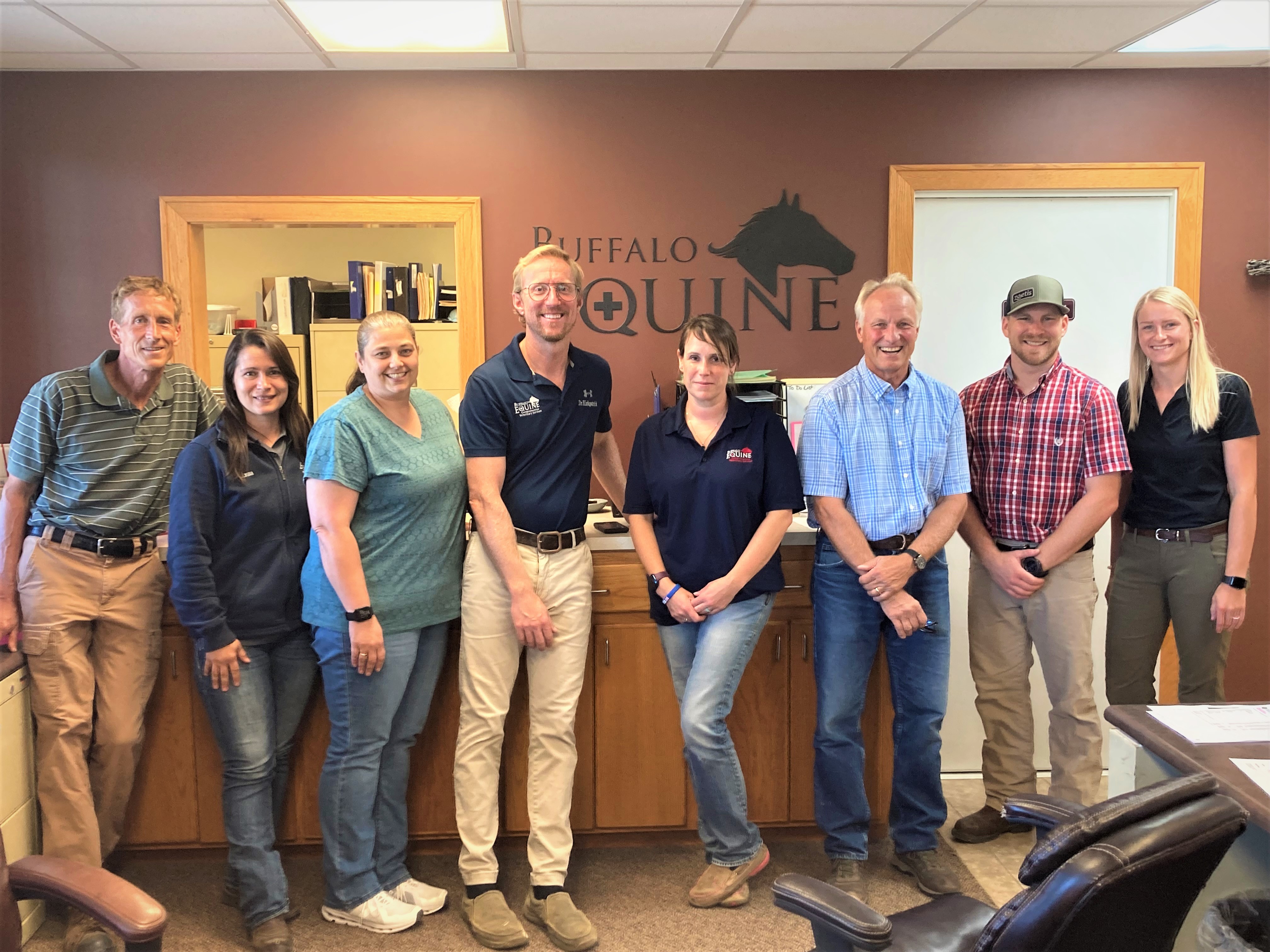- Membership
- Vet Techs
- Classifieds
- Education
- Get Involved
- Resources
- Annual Conference
Buffalo Equine Thriving With Top Notch Facility
The clinic has MVMA ties all the way back to 1962 when Dr. Stanley Held (MVMA President, 1972-73) purchased the practice and operated it out of his house for years before opening what is now home to Buffalo Companion Animal Clinic. Buffalo Equine split in 2001 and at the end of 2012 opened the much-needed equine building and hospital we visited. “By 2000 we had added three times the volume to that original building,” said Dr. George Theisen who worked as a veterinarian for Buffalo Equine since 1986 and now handles book-keeping duties. “We had too many people in one building so we split-up and it’s been great.” While the building is already ten years old, it still has a brand-new feel to it. “It still has that new car look,” said MVMA member Dr. Steve Boster who has been with the clinic since 2001 and a partner in the practice since 2004. “It doesn’t have that new car smell though. It smells like a veterinary clinic.” Buffalo Equine has a staff of nine including four doctors and stay very busy with a doctor always on call. It doesn’t matter what time of night or if it’s a weekend or holiday, Buffalo Equine is always prepared to be there for their clients. Drs. Winstead Kirkpatrick, Daniel Kish and Katie Warner handle the equine side which makes up at least 80 percent of the cases that come through the clinic and Dr. Boster handles everything else from cattle, goats, sheep, pigs and more. The clinic offers dentistry, internal medicine, laboratory services, ophthalmology, reproductive services, wellness and preventive care and even sports medicine which is a passion of Dr. Kirkpatrick. “We needed a hospital,” Dr. Boster explained. “We needed a place to put horses overnight and treat them. If we had a problem before we just had to ship them somewhere. It’s beautiful to bring them in and keep them here as an option.” Buffalo Equine is equipped with five stalls, each with their own camera installed so they can monitor horses all times of day. On a recent week in August, they were monitoring horses in every stall. Before the hospital if they visited an animal that needed more intensive care, they would have to ship them to Anoka, Stillwater or the University of Minnesota. “There are a lot of cases that you can’t just stop out there and it’s over,” Dr. Boster noted. He also mentioned how much better it is on the clients to not have to transfer over information to another clinic. “It’s nice to keep it in the family.” Before the addition of the hospital, Dr. Boster had cases where clients would pull up to the old clinic and he would work on them right there in the parking lot. One of his favorite stories though, was when he brought an elk calf right back to his house. The calf looked like it could be dead, so Dr. Boster hooked it up to IV fluids and tried to fence it into his yard before heading out. “I told my wife to keep an eye on the thing,” Dr. Boster said laughing. “I came back and she was furious.” It turns out the elk calf had woken up and ran off hiding in a soybean field. Dr. Boster’s wife used a trick he had taught her to get it out of hiding and chased it down to bring it back home. We suppose that’s life when you marry a large animal veterinarian and a great example of how the hospital has provided a stress relief for all involved with Buffalo Equine. “Now we can put the animal in a trailer and say let’s take a better look at this back at the hospital,” Dr. Boster said. “It’s made all the difference.” |

